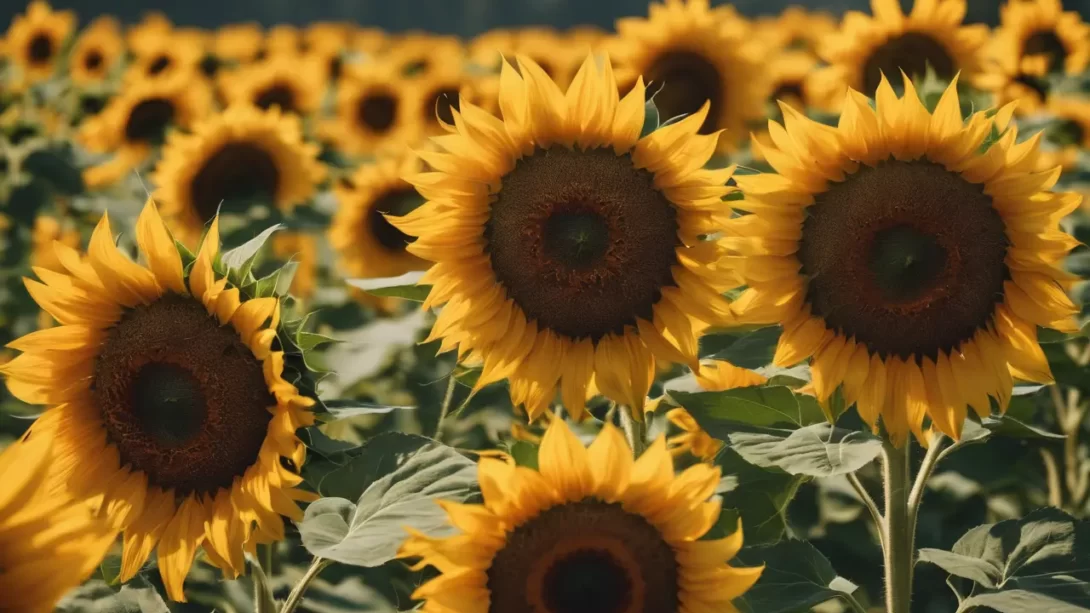Sunflowers, with their bold and cheerful blooms, are a favorite among gardeners and nature enthusiasts in Georgia. These iconic flowers not only add beauty to landscapes but also attract pollinators and can provide seeds for birds and humans alike. Understanding Georgia’s unique climate and the best practices for planting can help ensure a vibrant and healthy sunflower display.
The Georgia’s Climate
Georgia’s climate is predominantly humid subtropical, characterized by hot summers and mild to cool winters. This climate varies slightly across the state, with the northern regions experiencing cooler temperatures compared to the southern areas. The state’s long growing season and generally mild temperatures create favorable conditions for growing sunflowers, but the timing of planting can vary depending on your specific location within Georgia.
Selecting Sunflower Varieties for Georgia
When selecting sunflowers for Georgia gardens, there are numerous varieties to consider. Dwarf varieties, like ‘Sunny Smile’ or ‘Music Box’, are ideal for smaller spaces or container gardening. For a dramatic display, taller varieties such as ‘Mammoth’ or ‘Russian Giant’ can provide large blooms and are great for producing seeds. When choosing varieties, consider factors like bloom time, flower size, and plant height. Some varieties offer continuous blooming, while others are known for their single, large flower head.
Best Planting Times for Sunflowers in Georgia
In Georgia, sunflowers can be planted after the danger of frost has passed in the spring. This typically means planting can begin in late March to early April in most parts of the state. In northern Georgia, you might wait until mid-April for cooler temperatures. Sunflowers generally require around 70 to 100 days to mature and bloom, so planting in early spring allows for summer blooms. For a continuous display, consider planting in succession every couple of weeks until the end of June. This staggered planting ensures a consistent display of sunflowers throughout the summer and into early fall.
Soil Preparation and Site Selection
Choosing the right location and preparing the soil are crucial steps in growing healthy sunflowers. Sunflowers thrive in areas with full sun exposure, requiring at least 6 to 8 hours of direct sunlight daily. Select a site that offers ample sunlight and protection from strong winds, as tall varieties can be susceptible to toppling.
The ideal soil for sunflowers is well-draining and rich in organic matter. Before planting, work the soil to a depth of 6 to 8 inches and incorporate compost or well-rotted manure to enhance fertility. Sunflowers are not particularly fussy about soil pH, but a range between 6.0 and 7.5 is generally best. Ensure the planting site does not retain water, as stagnant moisture can lead to root rot.
Planting Techniques
When planting sunflowers, start with high-quality seeds for the best results. Plant the seeds about 1 to 2 inches deep in the soil, spacing them about 6 inches apart. For larger varieties, increase the spacing to 12 to 18 inches to allow enough room for growth. After sowing the seeds, water the soil gently but thoroughly to encourage germination.
Sunflower seeds typically germinate within 7 to 14 days, depending on soil temperature and moisture. Once the seedlings emerge and grow a few inches tall, thin them out to prevent overcrowding, leaving the strongest plant in each group.
Care and Maintenance
Regular care and maintenance are essential for the growth and health of sunflowers. Water the plants deeply but infrequently to encourage deep root development. Sunflowers are relatively drought-tolerant but benefit from consistent moisture, especially during dry spells.
Fertilizing is not usually necessary, especially if you have prepared the soil with organic matter. However, if growth seems slow or the foliage looks pale, a balanced, slow-release fertilizer can be applied.
As the sunflower plants grow, they may require support, particularly the taller varieties. Stake individual plants or provide support netting to prevent them from bending or breaking, especially in areas with strong winds or heavy rain.
Monitoring for pests and diseases is also important. Common issues include aphids, beetles, and mildew. Regular inspections and prompt treatment can help manage these problems before they become severe. Employing organic pest control methods and practicing good garden hygiene can effectively keep pests and diseases at bay.
Harvesting and Enjoying Sunflowers
Sunflowers bring not only visual delight but also practical uses. For ornamental purposes, sunflowers are typically ready to cut when the flower buds begin to open, or when the petals start to move away from the center. Cut them early in the morning, using sharp shears, and place them immediately in water for longer vase life.
If you’re harvesting sunflowers for their seeds, wait until the flower heads turn brown on the back. The seeds should be plump and the petals mostly fallen. To protect the seeds from birds, you can cover the heads with a light fabric or mesh bag. Once harvested, hang the flower heads upside down in a warm, dry place to fully dry out before removing the seeds.
Troubleshooting Common Growing Challenges
Growing sunflowers in Georgia can sometimes present challenges. One common issue is an infestation of pests, such as aphids or sunflower beetles. Regularly check the plants and use appropriate organic or chemical treatments if necessary. Fungal diseases like mildew and rust can also occur, especially in humid conditions. Ensure good air circulation around plants and avoid overhead watering to reduce these risks.
In cases of poor growth or weak stems, this could be due to inadequate sunlight or nutrient-poor soil. Make sure sunflowers are planted in a location with full sun exposure and consider soil testing and amendments for nutrient deficiencies.
Conclusion
Planting and growing sunflowers in Georgia can be a highly rewarding experience, offering both aesthetic and practical benefits. By understanding the optimal planting times, preparing your site and soil correctly, and providing the right care throughout the growing season, you can enjoy the bold and bright presence of sunflowers in your garden. Each growing season is an opportunity to learn and adapt your gardening practices, allowing you to enjoy these magnificent flowers to their fullest potential.



